 Search by Keyword
Sign Up Below for our MONTHLY BEATLES TRIVIA QUIZ!
|
“LOVELY RITA”
(John Lennon – Paul McCartney)
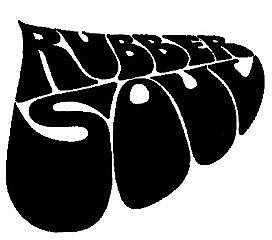 It was in the later months of 1965 that Paul stated: “We think that comedy numbers are the next thing.” Whether Beatles fans are conscious of this fact or not, the humor that started creeping into Lennon/McCartney songs from that time on made their music all that more enjoyable. Their established pop formula of ‘boy gets girl’ as heard in their earlier career through till the “Help!” album was becoming a little stale for them. Their album “Rubber Soul” began to interject some humorous lines and subject matter, such as in “Drive My Car” and the “Norwegian Wood” line about being asked to “sit anywhere” and then noticing “there wasn’t a chair,” not to mention the singer becoming an arsonist at the end of the song. Lyrical inclusions like this made Beatles music a little more fun. It was in the later months of 1965 that Paul stated: “We think that comedy numbers are the next thing.” Whether Beatles fans are conscious of this fact or not, the humor that started creeping into Lennon/McCartney songs from that time on made their music all that more enjoyable. Their established pop formula of ‘boy gets girl’ as heard in their earlier career through till the “Help!” album was becoming a little stale for them. Their album “Rubber Soul” began to interject some humorous lines and subject matter, such as in “Drive My Car” and the “Norwegian Wood” line about being asked to “sit anywhere” and then noticing “there wasn’t a chair,” not to mention the singer becoming an arsonist at the end of the song. Lyrical inclusions like this made Beatles music a little more fun.
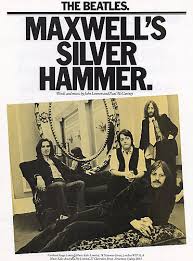 Fortunately for us, The Beatles continued this practice throughout their career, both Paul and John giving us something to smile at on songs like “Rocky Raccoon,” “Maxwell’s Silver Hammer” and "The Continuing Story Of Bungalow Bill." And although “Sgt. Pepper” is most noteworthy because of its innovativeness and lyrical imagery, we don’t have to look too hard to spot some downright silliness. While some lines in “With A Little Help From My Friends,” as well as “When I’m Sixty-Four,” have obvious humorous overtones, they are no match for the song “Lovely Rita,” which exudes silliness lyrically as well as in the performance. Upon examination, we’ll see that they took great pains to slice through the heaviness of their new album in order to just have a little fun. Fortunately for us, The Beatles continued this practice throughout their career, both Paul and John giving us something to smile at on songs like “Rocky Raccoon,” “Maxwell’s Silver Hammer” and "The Continuing Story Of Bungalow Bill." And although “Sgt. Pepper” is most noteworthy because of its innovativeness and lyrical imagery, we don’t have to look too hard to spot some downright silliness. While some lines in “With A Little Help From My Friends,” as well as “When I’m Sixty-Four,” have obvious humorous overtones, they are no match for the song “Lovely Rita,” which exudes silliness lyrically as well as in the performance. Upon examination, we’ll see that they took great pains to slice through the heaviness of their new album in order to just have a little fun.
 British Traffic Warden, circa 1969
|
Songwriting History
 “’Lovely Rita’ was occasioned by me reading that in America they call traffic wardens ‘meter maids,’” explained Paul in his book “Many Years From Now.” He added: “I thought, God, that’s so American! Also to me ‘maid’ had sexual connotations, like a French maid or a milkmaid, There’s something good about ‘maid,’ and ‘meter’ made it a bit more official, like the meter in a cab; the meter is running, meter maid. Hearing that amused me. In England you hear those American phrases and they enter our vocabulary. We let them in because we were amused, not because we love them or want to use them, it’s just because it’s funny. ‘Rita’ was the only name I could think of that would rhyme with it so I started on that, ‘Rita,’ ‘meter maid,’ ‘lovely Rita.’ And I just fantasized on the idea.” “’Lovely Rita’ was occasioned by me reading that in America they call traffic wardens ‘meter maids,’” explained Paul in his book “Many Years From Now.” He added: “I thought, God, that’s so American! Also to me ‘maid’ had sexual connotations, like a French maid or a milkmaid, There’s something good about ‘maid,’ and ‘meter’ made it a bit more official, like the meter in a cab; the meter is running, meter maid. Hearing that amused me. In England you hear those American phrases and they enter our vocabulary. We let them in because we were amused, not because we love them or want to use them, it’s just because it’s funny. ‘Rita’ was the only name I could think of that would rhyme with it so I started on that, ‘Rita,’ ‘meter maid,’ ‘lovely Rita.’ And I just fantasized on the idea.”
Back in 1984, Paul explained, “It was based on the American meter maid. And I got the idea to just...you know, so many of my things, like ‘When I'm Sixty-Four’ and those, they're tongue in cheek. But they get taken for real. And similarly with 'Lovely Rita' - the idea of a parking-meter attendant's being sexy was tongue in cheek at the time."
 Barry Miles, co-author of “Many Years From Now,” explains in the book that “Paul wrote the words while walking near his brother Michael (McGear)’s house in Gayton.” Paul added: “I remember one night just going for a walk and working on the words as I walked. This was about the time that parking meters were coming in; before that we’d been able to park freely, so people had quite an antagonistic feeling towards these people. I’d been nicked a lot for parking so the fun was to imagine one of them was a bit of an easy lay, ‘Come back to my place, darlin’.’ It somehow made them a figure of fun instead of a figure of terror and it was a way of getting me own back.” This antagonistic feeling in Britain about traffic wardens is why Paul was also quoted as saying, "I was thinking it should be a hate song, but then I thought it would be better to love her…I was imagining the kind of person I would be to fall for a meter maid." Barry Miles, co-author of “Many Years From Now,” explains in the book that “Paul wrote the words while walking near his brother Michael (McGear)’s house in Gayton.” Paul added: “I remember one night just going for a walk and working on the words as I walked. This was about the time that parking meters were coming in; before that we’d been able to park freely, so people had quite an antagonistic feeling towards these people. I’d been nicked a lot for parking so the fun was to imagine one of them was a bit of an easy lay, ‘Come back to my place, darlin’.’ It somehow made them a figure of fun instead of a figure of terror and it was a way of getting me own back.” This antagonistic feeling in Britain about traffic wardens is why Paul was also quoted as saying, "I was thinking it should be a hate song, but then I thought it would be better to love her…I was imagining the kind of person I would be to fall for a meter maid."
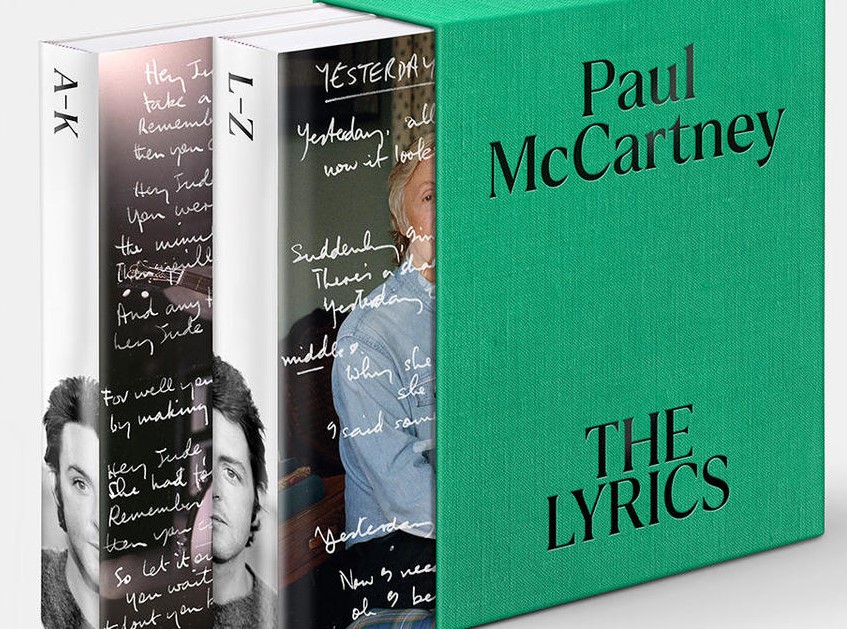 Paul's memories concerning the inspiration for "Lovely Rita" either got clearer with increased detail or muddied with the passing of time in his 2021 book "The Lyrics." With the song's lyrics clearly in mind, Paul related: "Nobody liked parking attendants, or 'meter maids,' as they were known in that benighted era. So, to compose a song about being in love with a meter maid, something nobody else liked, was amusing in itself. There was one particular meter maid in Portland Place on whom I based 'Rita.' She was slightly 'military' looking. I know it's a terrible thing to say, but those meter maids were never good-looking. You never heard anybody say, 'God, that's one stunning parking attendant.' In any case, 'I caught a glimpse of Rita' opposite the Chinese embassy in Portland Place. She was 'filling in a ticket in her little white book.' The 'cap,' and the 'bag across her shoulder.' It's sheer observation, like painting en plein air. I've said it before and I'll say it again: the secret to successful songwriting is the ability to paint a picture.” Paul's memories concerning the inspiration for "Lovely Rita" either got clearer with increased detail or muddied with the passing of time in his 2021 book "The Lyrics." With the song's lyrics clearly in mind, Paul related: "Nobody liked parking attendants, or 'meter maids,' as they were known in that benighted era. So, to compose a song about being in love with a meter maid, something nobody else liked, was amusing in itself. There was one particular meter maid in Portland Place on whom I based 'Rita.' She was slightly 'military' looking. I know it's a terrible thing to say, but those meter maids were never good-looking. You never heard anybody say, 'God, that's one stunning parking attendant.' In any case, 'I caught a glimpse of Rita' opposite the Chinese embassy in Portland Place. She was 'filling in a ticket in her little white book.' The 'cap,' and the 'bag across her shoulder.' It's sheer observation, like painting en plein air. I've said it before and I'll say it again: the secret to successful songwriting is the ability to paint a picture.”
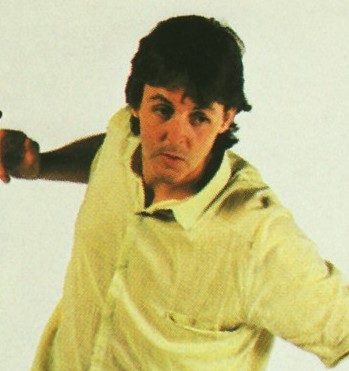 McCartney’s 1984 statement above about how his "tongue in cheek" songs “get taken for real” came to fruition many years after it was released. Paul explains: “It wasn’t based on a real person but, as often happened, it was claimed by a girl called Rita who was a traffic warden who apparently did give me a ticket, so that made the newspapers. I think it was more a question of coincidence: anyone called Rita who gave me a ticket would naturally think, ‘It’s me!’ I didn’t think, Wow, that woman give me a ticket, I’ll write a song about her – never happened like that.” McCartney’s 1984 statement above about how his "tongue in cheek" songs “get taken for real” came to fruition many years after it was released. Paul explains: “It wasn’t based on a real person but, as often happened, it was claimed by a girl called Rita who was a traffic warden who apparently did give me a ticket, so that made the newspapers. I think it was more a question of coincidence: anyone called Rita who gave me a ticket would naturally think, ‘It’s me!’ I didn’t think, Wow, that woman give me a ticket, I’ll write a song about her – never happened like that.”
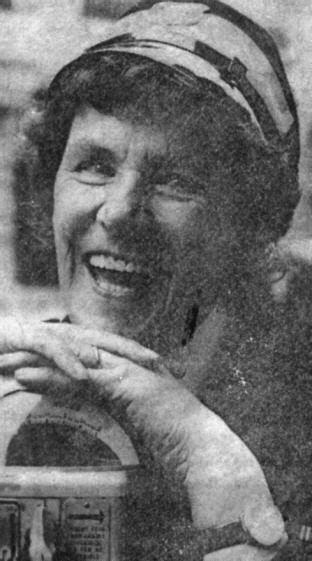 Although not named Rita, the woman Paul was here referring to was Meta Davies, who was the first female ticket officer working in the St. John’s Wood area where Paul lived. “It was in the spring of 1967 that I ticketed Paul’s car,” Meta related. “He was on a meter showing excess, so I gave him a ten-shilling ticket…I’d just put it on the windscreen when Paul came along and took it off. He looked at it and read my signature which was in full, because there was another M. Davies from the same unit. As Paul was walking away, he turned to me and said, ‘Oh, is your name really Meta?’ I told him that it was. We chatted for a few minutes and he said, ‘That would be a good name for a song. Would you mind if I use it?’ That was that. Off he went…Then, a few months later, I heard ‘Lovely Rita’ on the radio…I was never a Beatles’ fan but you couldn’t help hearing their music. My own daughter used to wait outside the Abbey Road Studios to see them!” Although not named Rita, the woman Paul was here referring to was Meta Davies, who was the first female ticket officer working in the St. John’s Wood area where Paul lived. “It was in the spring of 1967 that I ticketed Paul’s car,” Meta related. “He was on a meter showing excess, so I gave him a ten-shilling ticket…I’d just put it on the windscreen when Paul came along and took it off. He looked at it and read my signature which was in full, because there was another M. Davies from the same unit. As Paul was walking away, he turned to me and said, ‘Oh, is your name really Meta?’ I told him that it was. We chatted for a few minutes and he said, ‘That would be a good name for a song. Would you mind if I use it?’ That was that. Off he went…Then, a few months later, I heard ‘Lovely Rita’ on the radio…I was never a Beatles’ fan but you couldn’t help hearing their music. My own daughter used to wait outside the Abbey Road Studios to see them!”
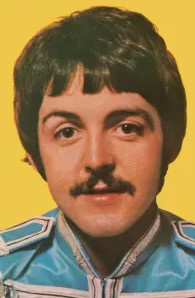 While this story does have the ring of truth, Paul’s explanation of coincidence could definitely be cited or, as Barry Miles explained it in "Many Years From Now," “the combination of Meta (Davies) and ‘meter’ may have provided an unconscious spark of an idea. There is also the possibility that the song was already written and Paul was just being friendly.” Since Meta Davies explained her experience with Paul as happening “in the spring of 1967” and the bulk of the song was already recorded on February 23rd of that year, this last explanation of Paul “just being friendly” may turn out to be the best. While this story does have the ring of truth, Paul’s explanation of coincidence could definitely be cited or, as Barry Miles explained it in "Many Years From Now," “the combination of Meta (Davies) and ‘meter’ may have provided an unconscious spark of an idea. There is also the possibility that the song was already written and Paul was just being friendly.” Since Meta Davies explained her experience with Paul as happening “in the spring of 1967” and the bulk of the song was already recorded on February 23rd of that year, this last explanation of Paul “just being friendly” may turn out to be the best.
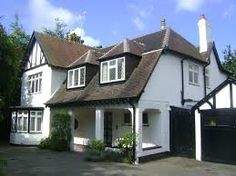 In any event, the song appears to have been written in early February of 1967, Steve Turner’s 1994 book “A Hard Day’s Write” intimating that Paul “began experimenting with it on the piano at his father’s home,” this being “Rembrandt,” a five-bedroom house Paul bought for his dad in 1964 in Heswall, Cheshire. As to any involvement by John in writing the song, he himself clears this up in his 1980 Playboy interview: "That’s Paul writing a pop song. He made up people like Rita, like a novelist. You hear lots of McCartney influence going on now on the radio: these stories about boring people being postmen and writing home. I’m not interested in writing about people like that. I like to write about me, because I know me. I don’t know anything about secretaries and postmen and meter maids." In any event, the song appears to have been written in early February of 1967, Steve Turner’s 1994 book “A Hard Day’s Write” intimating that Paul “began experimenting with it on the piano at his father’s home,” this being “Rembrandt,” a five-bedroom house Paul bought for his dad in 1964 in Heswall, Cheshire. As to any involvement by John in writing the song, he himself clears this up in his 1980 Playboy interview: "That’s Paul writing a pop song. He made up people like Rita, like a novelist. You hear lots of McCartney influence going on now on the radio: these stories about boring people being postmen and writing home. I’m not interested in writing about people like that. I like to write about me, because I know me. I don’t know anything about secretaries and postmen and meter maids."
 Interestingly, it is stated in Paul's book "The Lyrics" that the original lyric sheet (seen below) feature "handwritten lyrics by John Lennon, with additional notes by Paul." Some would argue that this indicates John as writing the bulk of the lyrics to "Lovely Rita," but Lennon's quote above leaves us to believe he was only jotting down Paul's lyrical ideas during a writing session in February 1967. Interestingly, it is stated in Paul's book "The Lyrics" that the original lyric sheet (seen below) feature "handwritten lyrics by John Lennon, with additional notes by Paul." Some would argue that this indicates John as writing the bulk of the lyrics to "Lovely Rita," but Lennon's quote above leaves us to believe he was only jotting down Paul's lyrical ideas during a writing session in February 1967.
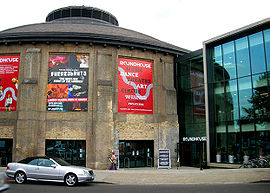 These lyrics were written on the back of an invitation for the January 28th, 1967 "Milton Volt Light and Sound Rave" held at London's Roundhouse for which The Beatles recorded their infamous "Carnival Of Light" effects tape on January 5th of that same year. A few lyrical differences can be noted on this document, one being "When it gets night, I'll tow your heart away," "night" being crossed out and replaced by "dark." Another change was "In a cab she looked so stunning," the final two words being crossed out and replaced with "much older" in order to rhyme with "shoulder." Also, "What would I do without you?" would later be replaced with "Where would I be without you?" These lyrics were written on the back of an invitation for the January 28th, 1967 "Milton Volt Light and Sound Rave" held at London's Roundhouse for which The Beatles recorded their infamous "Carnival Of Light" effects tape on January 5th of that same year. A few lyrical differences can be noted on this document, one being "When it gets night, I'll tow your heart away," "night" being crossed out and replaced by "dark." Another change was "In a cab she looked so stunning," the final two words being crossed out and replaced with "much older" in order to rhyme with "shoulder." Also, "What would I do without you?" would later be replaced with "Where would I be without you?"
Recording History
 About half way through the “Sgt. Pepper” sessions, or on February 23rd, 1967, the group entered EMI Studio Two at their usual 7 pm beginning point (as verified by documentation) to start sessions for their newly written composition “Lovely Rita.” The first job of the evening, however, was creating a stereo master of “A Day In The Life,” which entailed a good amount of time with various mixing attempts and editing being necessary. With this complete, they sat down at their instruments to begin the new song. About half way through the “Sgt. Pepper” sessions, or on February 23rd, 1967, the group entered EMI Studio Two at their usual 7 pm beginning point (as verified by documentation) to start sessions for their newly written composition “Lovely Rita.” The first job of the evening, however, was creating a stereo master of “A Day In The Life,” which entailed a good amount of time with various mixing attempts and editing being necessary. With this complete, they sat down at their instruments to begin the new song.
 Eight takes were made of the rhythm track with all four Beatles playing simultaneously but on their own track of the four-track tape. Track one contained George on acoustic guitar, track two had John on acoustic guitar, track three had Ringo on drums and track four contained Paul on piano. Paul’s piano was recorded with a noticeable amount of tape echo to create the desired feel. The tape machine was running at a slower 46 1/2 cycles per second (instead of the normal 50 cycles) to sound somewhat faster on playback. Eight takes were made of the rhythm track with all four Beatles playing simultaneously but on their own track of the four-track tape. Track one contained George on acoustic guitar, track two had John on acoustic guitar, track three had Ringo on drums and track four contained Paul on piano. Paul’s piano was recorded with a noticeable amount of tape echo to create the desired feel. The tape machine was running at a slower 46 1/2 cycles per second (instead of the normal 50 cycles) to sound somewhat faster on playback.
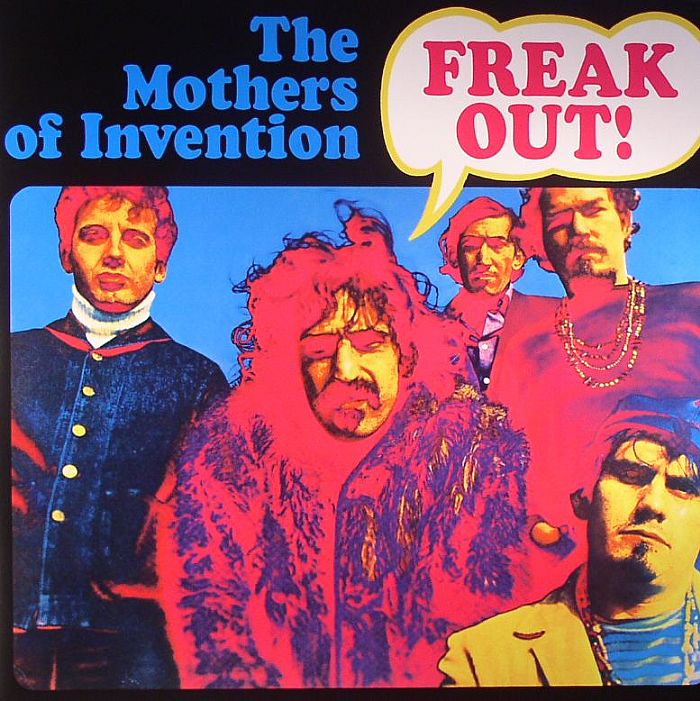 "Take eight" of this rhythm track is included as a bonus track on various 50th Anniversary editions of the "Sgt. Pepper" album. Before this take begins, John apparently is having some problem with his guitar cord. "My guitar still seems to go in and out like its...like the lead's wrong," he compains. After strumming loudly to test it out, he states, "I did a 'Freak Out' one then, one of them you don't know what you're doing," undoubtedly referencing the 1966 classic album of that name by The Mothers Of Invention. After he says, "Keep that one, alright, let's go," the take then begins and becomes the keeper even though they decided to ad lib for a little while at the end of the song, Paul vamping on the piano in a minor chord while both guitarists eventually stopped playing. Thinking that it sounded good that way, and realizing that it was customary to fade out an ending of that length, John is heard saying into his guitar microphone at the very end of the take, “Have ‘em leave it.” John got his way – the vamping became part of the released song as did that final statement. The final piano note, however, continued on and was even added to, Paul undoubtedly thinking it would be faded out. Since it was kept after all, this would have to be edited out later. "Take eight" of this rhythm track is included as a bonus track on various 50th Anniversary editions of the "Sgt. Pepper" album. Before this take begins, John apparently is having some problem with his guitar cord. "My guitar still seems to go in and out like its...like the lead's wrong," he compains. After strumming loudly to test it out, he states, "I did a 'Freak Out' one then, one of them you don't know what you're doing," undoubtedly referencing the 1966 classic album of that name by The Mothers Of Invention. After he says, "Keep that one, alright, let's go," the take then begins and becomes the keeper even though they decided to ad lib for a little while at the end of the song, Paul vamping on the piano in a minor chord while both guitarists eventually stopped playing. Thinking that it sounded good that way, and realizing that it was customary to fade out an ending of that length, John is heard saying into his guitar microphone at the very end of the take, “Have ‘em leave it.” John got his way – the vamping became part of the released song as did that final statement. The final piano note, however, continued on and was even added to, Paul undoubtedly thinking it would be faded out. Since it was kept after all, this would have to be edited out later.
 In Mark Lewisohn’s 1988 book “The Beatles Recording Sessions,” he brings out that "take eight" “had a longer piano introduction than on the record,” thus insinuating that something was edited out of the final version. But, upon listening to the isolated rhythm track on the master tape, we hear Paul count off the song which then ushers in the intro, this being of the identical length of the released version. To give Mark the benefit of the doubt, he may be referring to one of the earlier takes in which they could have experimented with a longer introduction. In Mark Lewisohn’s 1988 book “The Beatles Recording Sessions,” he brings out that "take eight" “had a longer piano introduction than on the record,” thus insinuating that something was edited out of the final version. But, upon listening to the isolated rhythm track on the master tape, we hear Paul count off the song which then ushers in the intro, this being of the identical length of the released version. To give Mark the benefit of the doubt, he may be referring to one of the earlier takes in which they could have experimented with a longer introduction.
 A reduction mix was then made of these four tracks which combined them all together into one track of another tape, thus becoming "take nine," which left tracks open for overdubs. The only overdub recorded on this day, undoubtedly after the other Beatles had left, was McCartney’s bass. In his book “Here, There And Everywhere,” engineer Geoff Emerick explains: “With this track, Paul began the practice of recording his bass last, after all of the other parts were already committed to tape. Being able to work off of all of the other elements of the track enabled him to hear the recording as a whole and therefore create melodic bass lines that would perfectly complement the final arrangement." A reduction mix was then made of these four tracks which combined them all together into one track of another tape, thus becoming "take nine," which left tracks open for overdubs. The only overdub recorded on this day, undoubtedly after the other Beatles had left, was McCartney’s bass. In his book “Here, There And Everywhere,” engineer Geoff Emerick explains: “With this track, Paul began the practice of recording his bass last, after all of the other parts were already committed to tape. Being able to work off of all of the other elements of the track enabled him to hear the recording as a whole and therefore create melodic bass lines that would perfectly complement the final arrangement."
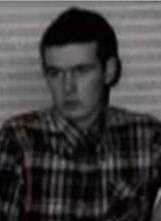 "He would do those overdubs in the wee hours, long after everyone else had gone home," Geoff Emerick continues. "It would be just Richard (Lush) and myself up in the control room, with McCartney sitting on a chair out in the middle of the studio, away from his usual corner, working assiduously to perfect his lines, giving all he had to the task at hand. Richard (Lush) would painstakingly drop the multitrack in and out of record, one section at a time, until every note was articulated perfectly and McCartney was satisfied with the result. He, of course, was the ultimate arbiter, but he was also constantly peering up into the control room to see if we were giving him a thumbs-up or a thumbs-down." "He would do those overdubs in the wee hours, long after everyone else had gone home," Geoff Emerick continues. "It would be just Richard (Lush) and myself up in the control room, with McCartney sitting on a chair out in the middle of the studio, away from his usual corner, working assiduously to perfect his lines, giving all he had to the task at hand. Richard (Lush) would painstakingly drop the multitrack in and out of record, one section at a time, until every note was articulated perfectly and McCartney was satisfied with the result. He, of course, was the ultimate arbiter, but he was also constantly peering up into the control room to see if we were giving him a thumbs-up or a thumbs-down."
 These late-night bass performances from Paul allowed Geoff Emerick to put on his thinking cap and come up with ideas to capture these low frequency sounds better. “It was Paul’s desire for perfection that enabled me to finally come up with a recording technique that yielded the ultra-smooth bass sound he and I had been pursuing for years. They key was that we would move his bass amp out of the baffles and into the center of the studio; I would then place a microphone about six feet away. With the studio empty, you could actually hear a little bit of the ambience of the room around the bass, which really helped; it gave the sound a certain roundness and put it in its own space. The sound we crafted effectively transformed the bass from a supporting rhythm instrument into a lead instrument.” After the bass track to “Lovely Rita” was committed to tape, the session was complete, it now being 3:45 am the following morning. These late-night bass performances from Paul allowed Geoff Emerick to put on his thinking cap and come up with ideas to capture these low frequency sounds better. “It was Paul’s desire for perfection that enabled me to finally come up with a recording technique that yielded the ultra-smooth bass sound he and I had been pursuing for years. They key was that we would move his bass amp out of the baffles and into the center of the studio; I would then place a microphone about six feet away. With the studio empty, you could actually hear a little bit of the ambience of the room around the bass, which really helped; it gave the sound a certain roundness and put it in its own space. The sound we crafted effectively transformed the bass from a supporting rhythm instrument into a lead instrument.” After the bass track to “Lovely Rita” was committed to tape, the session was complete, it now being 3:45 am the following morning.
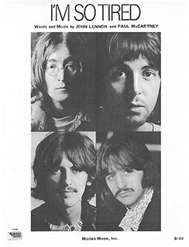 The next day, or should I say later that day, work on the song continued. This day, February 24th, 1967, saw the recording of Paul’s lead vocals done in EMI Studio Two between 7 pm and 1:15 am the following day. These vocals were single tracked only, Paul feeling that double-tracking them was unnecessary. Like the rhythm track, his vocals were also recorded at 46 1/2 cycles per second to make them sound faster when played back. With the tape rolling before his vocal was due to begin, Paul mumbles a garbled language not unlike what John was prone to do (such as at the end of the released "I'm So Tired" from the "White Album"). The next day, or should I say later that day, work on the song continued. This day, February 24th, 1967, saw the recording of Paul’s lead vocals done in EMI Studio Two between 7 pm and 1:15 am the following day. These vocals were single tracked only, Paul feeling that double-tracking them was unnecessary. Like the rhythm track, his vocals were also recorded at 46 1/2 cycles per second to make them sound faster when played back. With the tape rolling before his vocal was due to begin, Paul mumbles a garbled language not unlike what John was prone to do (such as at the end of the released "I'm So Tired" from the "White Album").
 During the ad lib ending of the song, McCartney begins making extraneous mouth sounds while also making tapping noises on something nearby, Lennon then joining in afterward until the rhythm track ends. After this take ends, John vocalizes a song with the lyrics, "Oh, no no no no no, I refuse to go." Another reduction mix was then made to free up more tracks for future overdubs, two attempts being made, takes 10 and 11, making "take 11" the master version up to this point. At 1:15 am, everyone went home, or at least somewhere else. During the ad lib ending of the song, McCartney begins making extraneous mouth sounds while also making tapping noises on something nearby, Lennon then joining in afterward until the rhythm track ends. After this take ends, John vocalizes a song with the lyrics, "Oh, no no no no no, I refuse to go." Another reduction mix was then made to free up more tracks for future overdubs, two attempts being made, takes 10 and 11, making "take 11" the master version up to this point. At 1:15 am, everyone went home, or at least somewhere else.
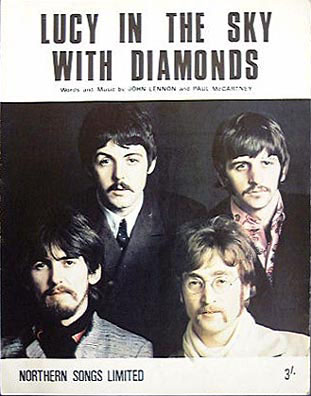 With attention then being given to other “Sgt. Pepper” tracks for the next week and a half, especially the new composition “Lucy In The Sky With Diamonds,” they finally returned to “Lovely Rita” on March 7th, 1967. The group entered EMI Studio Two at 7 pm (or as rumor has it) with the purpose of adding the backing harmonies on the song. With attention then being given to other “Sgt. Pepper” tracks for the next week and a half, especially the new composition “Lucy In The Sky With Diamonds,” they finally returned to “Lovely Rita” on March 7th, 1967. The group entered EMI Studio Two at 7 pm (or as rumor has it) with the purpose of adding the backing harmonies on the song.
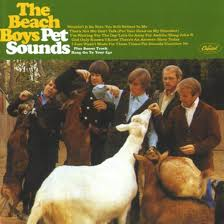 "’Lovely Rita’ was another track where The Beach Boys influence really manifested itself,” adds Geoff Emerick. “McCartney made a point of telling George Martin that he wanted the backing vocal arrangement to emulate the way the California singing group might approach the song. There were lots of fun overdubs on that track, like the four band members standing around one microphone humming through a comb and paper, each priceless Beatle comb carefully wrapped with a single layer of the standard issue extra-scratchy EMI toilet paper that we were all constantly complaining about." "’Lovely Rita’ was another track where The Beach Boys influence really manifested itself,” adds Geoff Emerick. “McCartney made a point of telling George Martin that he wanted the backing vocal arrangement to emulate the way the California singing group might approach the song. There were lots of fun overdubs on that track, like the four band members standing around one microphone humming through a comb and paper, each priceless Beatle comb carefully wrapped with a single layer of the standard issue extra-scratchy EMI toilet paper that we were all constantly complaining about."
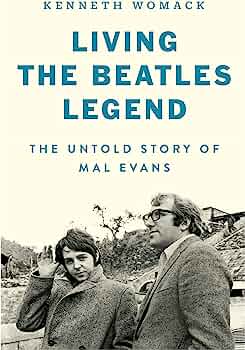 In Kenneth Womack's 2023 book "Living The Beatles Legend: The Untold Story Of Mal Evans," he tells how Mal Evans and Neil Aspinall "found themselves gathering up, of all things, EMI-embossed rolls of toilet paper around the studio" for The Beatles to use for this proposed kazoo-like overdub. The book then relates: "Incredibly, EMI's toilet paper was a subject of regular conversation among Mal (Evans) and the band. George was an especially strident critic. George Martin relates in his 1995 book "With A Little Help From My Friends," how George Harrison "complained frequently to the EMI management about the horrible slippery hardness of its loo paper. (Each sheet had the legend 'Property of EMI' stamped across it!) He said it was okay for wrapping round a comb and blowing through, but as to using it for what it was intended, you could forget it!" In Kenneth Womack's 2023 book "Living The Beatles Legend: The Untold Story Of Mal Evans," he tells how Mal Evans and Neil Aspinall "found themselves gathering up, of all things, EMI-embossed rolls of toilet paper around the studio" for The Beatles to use for this proposed kazoo-like overdub. The book then relates: "Incredibly, EMI's toilet paper was a subject of regular conversation among Mal (Evans) and the band. George was an especially strident critic. George Martin relates in his 1995 book "With A Little Help From My Friends," how George Harrison "complained frequently to the EMI management about the horrible slippery hardness of its loo paper. (Each sheet had the legend 'Property of EMI' stamped across it!) He said it was okay for wrapping round a comb and blowing through, but as to using it for what it was intended, you could forget it!"
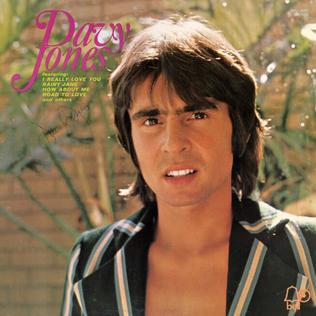 "On that same very silly night, the band overdubbed the heavy breathing at the end of the recording, with John looning about and sending Richard (Lush) and me up in the control room into fits of laughter. There were a few visitors in the recording studio that evening, including Davy Jones of The Monkees, and the joss sticks were especially prominent, ensuring that a splendid time was guaranteed for all.” "On that same very silly night, the band overdubbed the heavy breathing at the end of the recording, with John looning about and sending Richard (Lush) and me up in the control room into fits of laughter. There were a few visitors in the recording studio that evening, including Davy Jones of The Monkees, and the joss sticks were especially prominent, ensuring that a splendid time was guaranteed for all.”
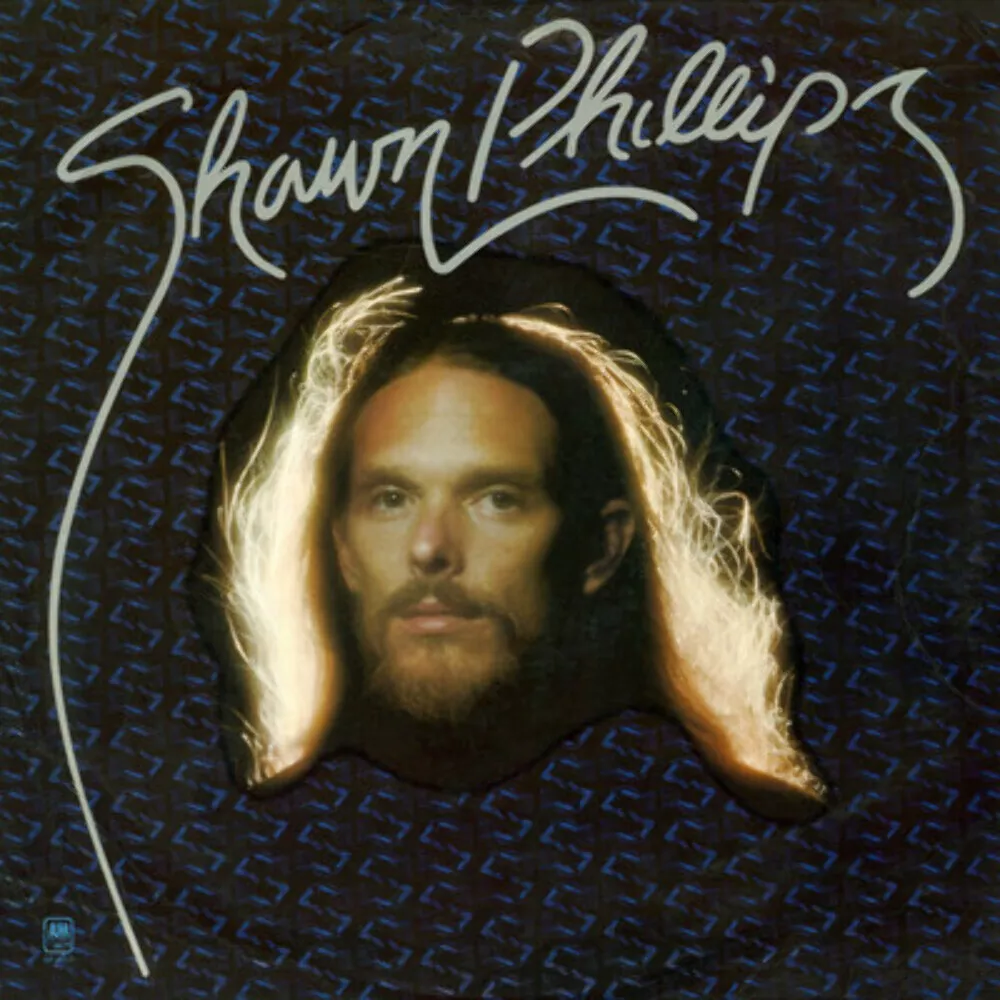 This fun session was the result, at least in part, of an effect that John heard in his headphones. “John always wanted repeat echo in his headphones,” Geoff Emerick recalls. “It gave him more excitement. They’d finished doing the vocal on ‘Lovely Rita’ and he just started fooling around, using the echo as his inspiration.” Also among the guests in the studio that evening was folk-rock musician Shawn Phillips who had reportedly sang background vocals with the group on the song. His recent studio work with Beatles friend Donovan undoubtedly got him his invite to the session. By 2:30 am the next morning, they all filed out and enjoyed the next day off from session work. This fun session was the result, at least in part, of an effect that John heard in his headphones. “John always wanted repeat echo in his headphones,” Geoff Emerick recalls. “It gave him more excitement. They’d finished doing the vocal on ‘Lovely Rita’ and he just started fooling around, using the echo as his inspiration.” Also among the guests in the studio that evening was folk-rock musician Shawn Phillips who had reportedly sang background vocals with the group on the song. His recent studio work with Beatles friend Donovan undoubtedly got him his invite to the session. By 2:30 am the next morning, they all filed out and enjoyed the next day off from session work.
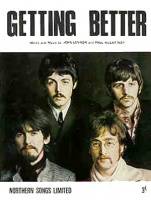 Two weeks later, after the band had premiered three more “Pepper” tracks in the studio, they finally got around to finishing off “Lovely Rita.” This session was on March 21st, 1967 in EMI Studio Two, beginning at their usual documented time of 7 pm. The first order of business was performing vocals for the newly recorded song “Getting Better” which, as detailed in that song's history, resulted in a near-miss catastrophe as Lennon was left alone on the roof of EMI while experiencing an LSD trip. Two weeks later, after the band had premiered three more “Pepper” tracks in the studio, they finally got around to finishing off “Lovely Rita.” This session was on March 21st, 1967 in EMI Studio Two, beginning at their usual documented time of 7 pm. The first order of business was performing vocals for the newly recorded song “Getting Better” which, as detailed in that song's history, resulted in a near-miss catastrophe as Lennon was left alone on the roof of EMI while experiencing an LSD trip.
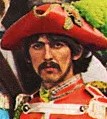 Lennon’s participation in the session was over at this point, John telling the others “I’ll just stay and watch.” What he "watched," starting approximately at 10 pm, was their figuring out what to do about the solo section of “Lovely Rita.” Geoff Emerick added: “The opportunity arose for me to make my recording debut on a Beatles album, but my shy nature let me down. After hours of attempting a Harrison guitar solo that never quite worked, they were stuck for an idea, and the frustration was starting to show. I distinctly remember standing at the top of the stairs in Studio Two and Paul’s shouting up at me, ‘Geoff, you tell us what the solo should be.’” Lennon’s participation in the session was over at this point, John telling the others “I’ll just stay and watch.” What he "watched," starting approximately at 10 pm, was their figuring out what to do about the solo section of “Lovely Rita.” Geoff Emerick added: “The opportunity arose for me to make my recording debut on a Beatles album, but my shy nature let me down. After hours of attempting a Harrison guitar solo that never quite worked, they were stuck for an idea, and the frustration was starting to show. I distinctly remember standing at the top of the stairs in Studio Two and Paul’s shouting up at me, ‘Geoff, you tell us what the solo should be.’”
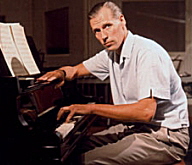 “My suggestion was that they try something on piano,” Geoff Emerick continues. “To my surprise, Paul asked, ‘Why don’t you play it?’ In a kneejerk reaction, and to my everlasting regret, I demurred; I was simply too embarrassed to demonstrate my musical skills. Paul shrugged his shoulders and took a stab at it, but he still wasn’t a hundred percent certain that it was a good idea, so he had George Martin play something instead. While Paul listened up in the control room, George reeled off a honky-tonk-style solo that was deemed acceptable, although, frankly, I wasn’t too crazy about it.” This solo, according to “The Beatles Recording Sessions,” was recorded at 41 1/4 cycles per second to sound faster when played back. “My suggestion was that they try something on piano,” Geoff Emerick continues. “To my surprise, Paul asked, ‘Why don’t you play it?’ In a kneejerk reaction, and to my everlasting regret, I demurred; I was simply too embarrassed to demonstrate my musical skills. Paul shrugged his shoulders and took a stab at it, but he still wasn’t a hundred percent certain that it was a good idea, so he had George Martin play something instead. While Paul listened up in the control room, George reeled off a honky-tonk-style solo that was deemed acceptable, although, frankly, I wasn’t too crazy about it.” This solo, according to “The Beatles Recording Sessions,” was recorded at 41 1/4 cycles per second to sound faster when played back.
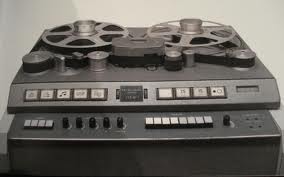 Before Paul took John home to ‘come down,’ he made one final suggestion concerning this piano section. “In the true ‘Pepper’ spirit of experimentation, Paul asked me to screw things up so the solo didn’t sound like it was coming from a piano,” Geoff Emerick recalls. “By that stage, I had already adopted a policy that no piano was ever recorded the same way twice. As a result, I was miking pianos from underneath, taping mics to the soundboard – anything to get it sounding dirrerent each time. This time around, I decided to place some sticky editing tape on the guide rollers of a tape machine that was sending signal to the echo chamber, causing the tape to wow and flutter. The end result was an audible, and quite interesting, "wobble" in the piano sound. It was yet another contravention of the rules that, with any band other than The Beatles, would have easily gotten me fired.” Before Paul took John home to ‘come down,’ he made one final suggestion concerning this piano section. “In the true ‘Pepper’ spirit of experimentation, Paul asked me to screw things up so the solo didn’t sound like it was coming from a piano,” Geoff Emerick recalls. “By that stage, I had already adopted a policy that no piano was ever recorded the same way twice. As a result, I was miking pianos from underneath, taping mics to the soundboard – anything to get it sounding dirrerent each time. This time around, I decided to place some sticky editing tape on the guide rollers of a tape machine that was sending signal to the echo chamber, causing the tape to wow and flutter. The end result was an audible, and quite interesting, "wobble" in the piano sound. It was yet another contravention of the rules that, with any band other than The Beatles, would have easily gotten me fired.”
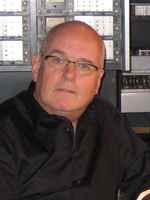 With this solo put to tape, the recording of “Lovely Rita” was complete, it now being about 12:30 the next morning. Apparently without any Beatles around, the released mono mix of the song was made by George Martin, Geoff Emerick and Richard Lush in the control room of EMI Studio Two. They worked quite hard at getting the right mix, making 15 attempts with the tape machine running at 48 3/4 cycles per second throughout the entire song. In the end, parts of remixes 11 and 14 were deemed best which they then edited together. By 2:45 am the following morning, this legendary recording session was finally over. With this solo put to tape, the recording of “Lovely Rita” was complete, it now being about 12:30 the next morning. Apparently without any Beatles around, the released mono mix of the song was made by George Martin, Geoff Emerick and Richard Lush in the control room of EMI Studio Two. They worked quite hard at getting the right mix, making 15 attempts with the tape machine running at 48 3/4 cycles per second throughout the entire song. In the end, parts of remixes 11 and 14 were deemed best which they then edited together. By 2:45 am the following morning, this legendary recording session was finally over.
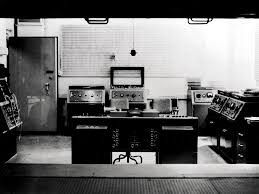 The stereo mix of “Lovely Rita” wasn’t created until April 17th, 1967, in the EMI Studio Two control room by the same engineering team of George Martin, Geoff Emerick and Richard Lush. Two remixes were made, presumably the second one being deemed best. The rhythm track was placed exclusively in the left channel with the bass guitar and piano solo panned to the right. All vocals, which include the comb and toilet paper segments, are centered in the mix. The stereo mix of “Lovely Rita” wasn’t created until April 17th, 1967, in the EMI Studio Two control room by the same engineering team of George Martin, Geoff Emerick and Richard Lush. Two remixes were made, presumably the second one being deemed best. The rhythm track was placed exclusively in the left channel with the bass guitar and piano solo panned to the right. All vocals, which include the comb and toilet paper segments, are centered in the mix.
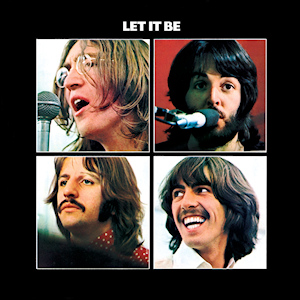 The Beatles played "Lovely Rita" in a recording studio on one other occasion, this being in Apple Studios on January 24th, 1969 during the rehearsals for what became the "Let It Be" album and movie. This rendition, of course, was never deemed suitable for release. The Beatles played "Lovely Rita" in a recording studio on one other occasion, this being in Apple Studios on January 24th, 1969 during the rehearsals for what became the "Let It Be" album and movie. This rendition, of course, was never deemed suitable for release.
 Sometime between 2016 and 2017, George Martin's son Giles Martin, along with engineer Sam Okell, revisited the original tapes for "Lovely Rita" to create a new stereo mix for inclusion on the new 50th Anniversay Edition of the "Sgt. Pepper" album. They also included, as a bonus track on various editions of this re-release, the unadulterated "take nine," which was "take eight" of the rhythm track with the lead vocals added. Giles Martin decided to present this take running at the standard speed, which makes McCartney's voice sound noticeably higher in pitch than we usually hear it. Sometime between 2016 and 2017, George Martin's son Giles Martin, along with engineer Sam Okell, revisited the original tapes for "Lovely Rita" to create a new stereo mix for inclusion on the new 50th Anniversay Edition of the "Sgt. Pepper" album. They also included, as a bonus track on various editions of this re-release, the unadulterated "take nine," which was "take eight" of the rhythm track with the lead vocals added. Giles Martin decided to present this take running at the standard speed, which makes McCartney's voice sound noticeably higher in pitch than we usually hear it.
Song Structure and Style
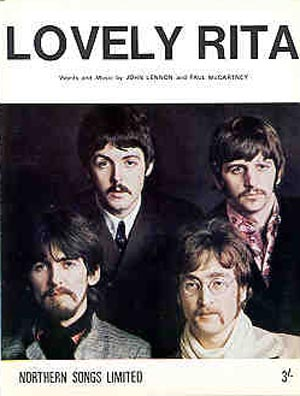 For the entire Beatles catalog up to this point, this is the first time that there exists an ambiguity as to the labeling of the sections of one of their compositions. Is the first vocal section a chorus, or is it an intro? Is the first solo vocal section a chorus or a verse? Is the next solo vocal section a verse or a bridge? Opinions vary quite a bit and it all appears subjective. For the entire Beatles catalog up to this point, this is the first time that there exists an ambiguity as to the labeling of the sections of one of their compositions. Is the first vocal section a chorus, or is it an intro? Is the first solo vocal section a chorus or a verse? Is the next solo vocal section a verse or a bridge? Opinions vary quite a bit and it all appears subjective.
Since Paul has never said anything in interviews to hint at what his intentions were (that is, if it really mattered to him anyway), we will here categorize them in order to differentiate the sections. The structure, therefore, appears to be ‘intro/ chorus/ verse/ chorus/ chorus (solo)/ verse/ chorus/ outro’ (or abcbbcba). As we’ll see, there are added measures here and there and other nuances which spice up the format even further.
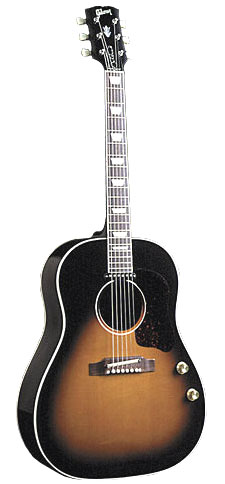 It all begins with an eight-measure introduction, the first four measures being mostly instrumental. The first three measures are played by McCartney on piano, George on acoustic guitar (played high on the neck) and John on acoustic guitar (played lower on the neck). The second measure includes an airy but melodic “aaaaah” sung by McCartney in order to to set the mood while it all drops off for the fourth measure to allow for Ringo to blast out an interesting drum fill. It all begins with an eight-measure introduction, the first four measures being mostly instrumental. The first three measures are played by McCartney on piano, George on acoustic guitar (played high on the neck) and John on acoustic guitar (played lower on the neck). The second measure includes an airy but melodic “aaaaah” sung by McCartney in order to to set the mood while it all drops off for the fourth measure to allow for Ringo to blast out an interesting drum fill.
The second half of the introduction repeats the simple chord pattern of the first half but with Ringo knocking off a simple 4/4 drum beat while McCartney's bass bounces up and down rhythmically almost as a lead instrument would. John, Paul and George (and Shawn Phillips?) fill up the foreground with Beach Boys-like harmonies singing “Lovely Rita metaah maid,” which can easily be heard here, as well as later in the song, as “lucky Rita” or “love me Rita.” (Check it out with headphones!)
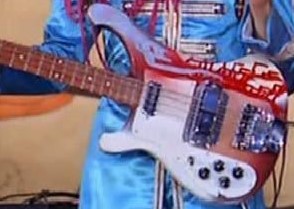 As the introduction ends, we hear what sounds like Lennon on the background vocal overdub exclaim “aah,” followed by “ohhh” in the first chorus just after Paul sings the words “Lovely Rita.” This first chorus is eight measures long and features Paul’s single-tracked but highly ADT’d vocal track on top of the rhythm track and his overdubbed bass work. An interesting rising comb-and-toilet paper sound can be heard at the end of the fourth and the beginning of the fifth measure, which has an enormous amount of reverb added to make it sound uncannily like horns. As the introduction ends, we hear what sounds like Lennon on the background vocal overdub exclaim “aah,” followed by “ohhh” in the first chorus just after Paul sings the words “Lovely Rita.” This first chorus is eight measures long and features Paul’s single-tracked but highly ADT’d vocal track on top of the rhythm track and his overdubbed bass work. An interesting rising comb-and-toilet paper sound can be heard at the end of the fourth and the beginning of the fifth measure, which has an enormous amount of reverb added to make it sound uncannily like horns.
 The first verse then begins, this being fourteen measures long comprising two repeated six measure phrases followed by two added measures that allow the singer to catch his breath. Paul’s Liverpudlian accent shows up a bit in the line “in a little white booook” in measure six. In measures seven through fourteen we hear vocal maracas sung (?) by McCartney, heard as a repeated “chick-a-chick-a-chick-a” recorded during a background vocal overdub. The remaining two measures of the verse feature the second and final appearance in the song of comb-and-toilet paper notes, which are again highly reverberated. The first verse then begins, this being fourteen measures long comprising two repeated six measure phrases followed by two added measures that allow the singer to catch his breath. Paul’s Liverpudlian accent shows up a bit in the line “in a little white booook” in measure six. In measures seven through fourteen we hear vocal maracas sung (?) by McCartney, heard as a repeated “chick-a-chick-a-chick-a” recorded during a background vocal overdub. The remaining two measures of the verse feature the second and final appearance in the song of comb-and-toilet paper notes, which are again highly reverberated.
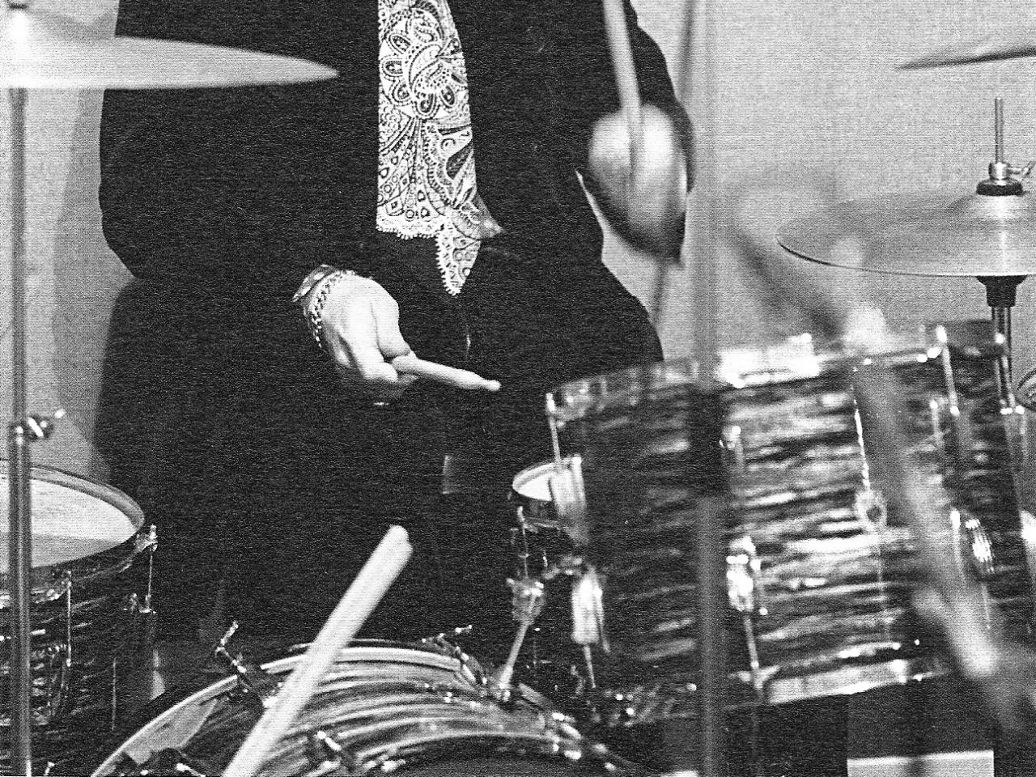 A second chorus is now heard which is actually much different from the first in many respects. First of all, it has a different set of lyrics and, second of all, it is a whopping fourteen-measures long as compared to only eight measures in the first chorus. The extra measures are filled with more Beach Boys-like harmonies which actually begin in the third measure behind Paul’s lead vocal line “may I inquire discreetly.” The word “maid” that is heard in the background vocals is stretched out from measures seven through ten, followed by a harmonized “aaah” in measures eleven and twelve. A trademark “beatles break” then occurs which allows Ringo to take center stage again for another drum fill that segues perfectly into the instrumental chorus that follows. Paul brings in this piano solo with the exclamation “Rita!” as the final measure of the chorus concludes. A second chorus is now heard which is actually much different from the first in many respects. First of all, it has a different set of lyrics and, second of all, it is a whopping fourteen-measures long as compared to only eight measures in the first chorus. The extra measures are filled with more Beach Boys-like harmonies which actually begin in the third measure behind Paul’s lead vocal line “may I inquire discreetly.” The word “maid” that is heard in the background vocals is stretched out from measures seven through ten, followed by a harmonized “aaah” in measures eleven and twelve. A trademark “beatles break” then occurs which allows Ringo to take center stage again for another drum fill that segues perfectly into the instrumental chorus that follows. Paul brings in this piano solo with the exclamation “Rita!” as the final measure of the chorus concludes.
 The instrumental chorus is back to eight measures as the first chorus was, but is filled with George Martin’s impressive barroom-like piano solo, accentuated with Paul’s descending “whoa – oh – oh – oh” from the lead vocal overdub in the background. George Martin’s slow rising glissando ends his musical involvement on the song as well as the instrumental chorus, leading directly into the second verse, which once again is fourteen measures long. This verse contains all of the existing elements from the previous one with the exception of the comb-and-toilet paper accents at the end. Instead, the same chords change and Paul harmonizes with himself on a sustained “ohhh” to end the verse. Another interesting feature heard here from the background vocal track is someone’s "champagne pop" sound, probably performed with a hand hit against a slightly open mouth, heard in the fourth measure after the words “and over dinner.” (Get out those headphones again!) The instrumental chorus is back to eight measures as the first chorus was, but is filled with George Martin’s impressive barroom-like piano solo, accentuated with Paul’s descending “whoa – oh – oh – oh” from the lead vocal overdub in the background. George Martin’s slow rising glissando ends his musical involvement on the song as well as the instrumental chorus, leading directly into the second verse, which once again is fourteen measures long. This verse contains all of the existing elements from the previous one with the exception of the comb-and-toilet paper accents at the end. Instead, the same chords change and Paul harmonizes with himself on a sustained “ohhh” to end the verse. Another interesting feature heard here from the background vocal track is someone’s "champagne pop" sound, probably performed with a hand hit against a slightly open mouth, heard in the fourth measure after the words “and over dinner.” (Get out those headphones again!)
 One final chorus is heard next with yet different lyrics, this chorus being only six measures long this time. The final word of the last line “make me think of you” ushers in what appears as an eight measure conclusion, which is a repeat of the last four measures of the introduction repeated twice. On top of the background vocal harmonies is Paul meandering through the song’s title a few times, such as “oh, lovely Rita, Rita, Meetah maid.” One final chorus is heard next with yet different lyrics, this chorus being only six measures long this time. The final word of the last line “make me think of you” ushers in what appears as an eight measure conclusion, which is a repeat of the last four measures of the introduction repeated twice. On top of the background vocal harmonies is Paul meandering through the song’s title a few times, such as “oh, lovely Rita, Rita, Meetah maid.”
 What follows is another twenty-one measures of tom-foolery in a minor key with John and Paul heavy-breathing, moaning and making what sounds like haunted house shrieks on top of the adlibbed rhythm track. John Lennon’s instruction from that rhythm track to “have ‘em leave it” was followed, so their silly vocal high jinks were left in as well. What follows is another twenty-one measures of tom-foolery in a minor key with John and Paul heavy-breathing, moaning and making what sounds like haunted house shrieks on top of the adlibbed rhythm track. John Lennon’s instruction from that rhythm track to “have ‘em leave it” was followed, so their silly vocal high jinks were left in as well.
McCartney’s bouncy and well-rehearsed bass work is a prime feature of the song, as is his plodding but expertly performed piano work. His vocals are sometimes a little off-pitch (such as on the line “and Rita paid it”) which could very well have been hidden if double-tracked. However, being that the song was of a comical nature anyway, they apparently felt it good enough for release.
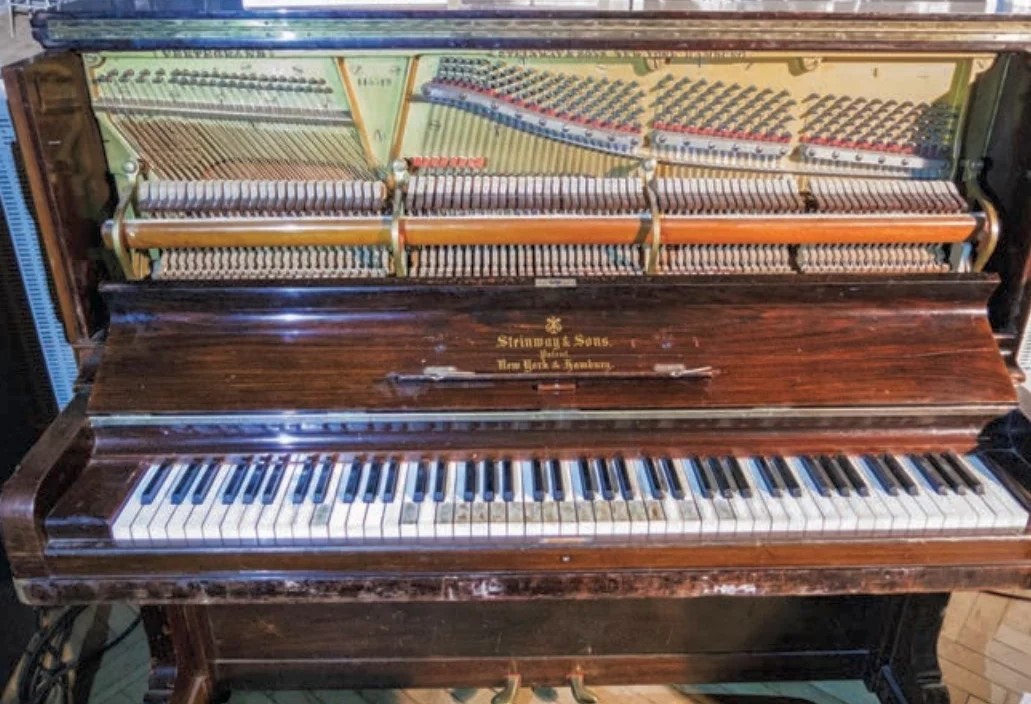 Although a Paul song, it comes across as a group effort with John’s voice being the most easily identified in the harmonies and goofy vocalization at the end. Both his and George’s acoustic guitars are heard prominently on the song, Harrison’s being more in the forefront. Ringo lays down a heavy backbeat with some powerful drum fills here and there. And, of course, George Martin could always be counted on to pull off a great keyboard solo, even as a short notice last resort. Although a Paul song, it comes across as a group effort with John’s voice being the most easily identified in the harmonies and goofy vocalization at the end. Both his and George’s acoustic guitars are heard prominently on the song, Harrison’s being more in the forefront. Ringo lays down a heavy backbeat with some powerful drum fills here and there. And, of course, George Martin could always be counted on to pull off a great keyboard solo, even as a short notice last resort.
 Paul’s lyrics are nothing short of clever with some nice touches of rhyming humor. After he begins proceedings with the generalized pun “when it gets dark I tow your heart away,” Paul continues the song in a narrative form, as if giving us a play-by-play of how and why he asked her out and what happened on the date. Rhyming “Rita” with “meter,” as well as “tried to win her” with “over dinner,” shows Paul with tongue firmly in cheek. British phrases abound as well, with “free to take some tea with me” and “give us a wink” standing out. And how can you resist a silly but homespun line like “sitting on the sofa with a sister or two”? Paul’s lyrics are nothing short of clever with some nice touches of rhyming humor. After he begins proceedings with the generalized pun “when it gets dark I tow your heart away,” Paul continues the song in a narrative form, as if giving us a play-by-play of how and why he asked her out and what happened on the date. Rhyming “Rita” with “meter,” as well as “tried to win her” with “over dinner,” shows Paul with tongue firmly in cheek. British phrases abound as well, with “free to take some tea with me” and “give us a wink” standing out. And how can you resist a silly but homespun line like “sitting on the sofa with a sister or two”?
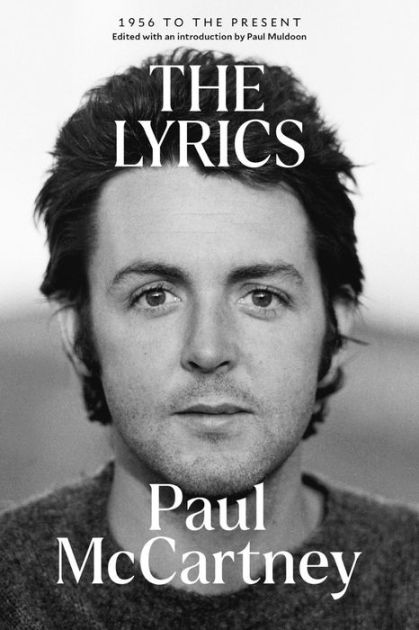 Paul personally evaluated the song "Lovely Rita," five-and-a-half decades later, with the lyrics undoubtedly in front of him, in his book "The Lyrics": "One of the complicating factors in this picture is just how taken the speaker is with Rita. You might recall that her suitor 'got the bill,' but 'Rita paid it.' It would have been considered ungentlemanly in that era to allow her to do that. Set against that is the idea that the speaker seems slightly miffed by the fact that he and Rita end up on the 'sofa with a sister or two.' The line suggests that he might quite like to have been alone with her rather than to have the 'sister or two' as third and fourth wheels." Paul personally evaluated the song "Lovely Rita," five-and-a-half decades later, with the lyrics undoubtedly in front of him, in his book "The Lyrics": "One of the complicating factors in this picture is just how taken the speaker is with Rita. You might recall that her suitor 'got the bill,' but 'Rita paid it.' It would have been considered ungentlemanly in that era to allow her to do that. Set against that is the idea that the speaker seems slightly miffed by the fact that he and Rita end up on the 'sofa with a sister or two.' The line suggests that he might quite like to have been alone with her rather than to have the 'sister or two' as third and fourth wheels."
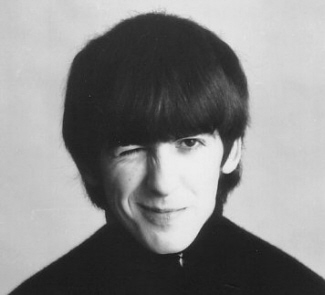 "Of course," McCartney continues, "another implication is the possibility of 'making it' not only with Rita but with the 'sister or two' in tow. I've already had fun with that idea in the line 'When it gets dark I tow your heart away.' At the end I can't quite suppress my weakness for naughtiness. In the phrase 'Give us a wink,' for an example, this wink may conjure up an idea such as 'a nod and a wink,' but this is also a euphemism, I admit...The BBC wouldn't ban a song like this because they couldn't say for sure what you meant when you said, 'Give us a wink and make me think of you.' And it amuses me think that the BBC, that bastion of respectability, was also in Portland Place, not too far from the Chinese embassy where I first saw Rita in the flesh." "Of course," McCartney continues, "another implication is the possibility of 'making it' not only with Rita but with the 'sister or two' in tow. I've already had fun with that idea in the line 'When it gets dark I tow your heart away.' At the end I can't quite suppress my weakness for naughtiness. In the phrase 'Give us a wink,' for an example, this wink may conjure up an idea such as 'a nod and a wink,' but this is also a euphemism, I admit...The BBC wouldn't ban a song like this because they couldn't say for sure what you meant when you said, 'Give us a wink and make me think of you.' And it amuses me think that the BBC, that bastion of respectability, was also in Portland Place, not too far from the Chinese embassy where I first saw Rita in the flesh."
American Releases
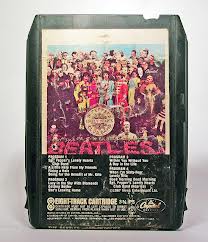 June 2nd, 1967 was the release date of their landmark album “Sgt. Pepper’s Lonely Hearts Club Band.” Positioned as it was after many tracks that spanned various genres of music, from the waltz-like strings of “She’s Leaving Home,” the "Big Top" atmosphere of “Being For The Benefit Of Mr. Kite,” the spiritually Eastern flavor of “Within You Without You,” and the '20s pastiche of “When I’m Sixty-Four,” it was a welcome return to the rock/pop rhythms we all come to expect from The Beatles when we heard “Lovely Rita” blast through our speakers. June 2nd, 1967 was the release date of their landmark album “Sgt. Pepper’s Lonely Hearts Club Band.” Positioned as it was after many tracks that spanned various genres of music, from the waltz-like strings of “She’s Leaving Home,” the "Big Top" atmosphere of “Being For The Benefit Of Mr. Kite,” the spiritually Eastern flavor of “Within You Without You,” and the '20s pastiche of “When I’m Sixty-Four,” it was a welcome return to the rock/pop rhythms we all come to expect from The Beatles when we heard “Lovely Rita” blast through our speakers.
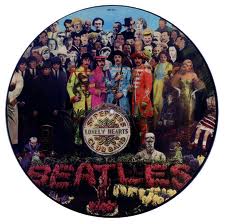 The album took on many vinyl reissues in the US throughout the decades, the 1978 picture disc version being a quite unique one. Capitol then re-released this picture disc on December 15th, 2017 on 180 Gram vinyl using the new Giles Martin stereo mix. The album took on many vinyl reissues in the US throughout the decades, the 1978 picture disc version being a quite unique one. Capitol then re-released this picture disc on December 15th, 2017 on 180 Gram vinyl using the new Giles Martin stereo mix.
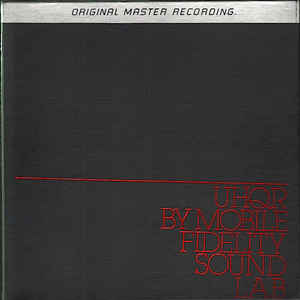 Two interesting American vinyl reissues of “Sgt. Pepper” came out as "Original Master Recording" editions produced by Mobile Fidelity Sound Lab. The first edition released in September of 1982 (containing matrix #UHQR "Ultra High Quality Recording" 1-100) listed for $40 per copy, more than five times the price of the standard LP, and was limited to 5000 sequentially numbered copies that weighed 200 grams (or double the weight of conventional vinyl albums at that time) and were packaged between layers of protective foam rubber in a thick box. The second edition from Mobile Fidelity Sound Lab was released in June of 1983 similar to the rest of the Beatles catalog released within their series. Both of these were prepared utilizing half-speed mastering technology from the original master tape on loan from EMI. These versions of “Sgt. Pepper” were only available for a short time and are quite collectible today. Two interesting American vinyl reissues of “Sgt. Pepper” came out as "Original Master Recording" editions produced by Mobile Fidelity Sound Lab. The first edition released in September of 1982 (containing matrix #UHQR "Ultra High Quality Recording" 1-100) listed for $40 per copy, more than five times the price of the standard LP, and was limited to 5000 sequentially numbered copies that weighed 200 grams (or double the weight of conventional vinyl albums at that time) and were packaged between layers of protective foam rubber in a thick box. The second edition from Mobile Fidelity Sound Lab was released in June of 1983 similar to the rest of the Beatles catalog released within their series. Both of these were prepared utilizing half-speed mastering technology from the original master tape on loan from EMI. These versions of “Sgt. Pepper” were only available for a short time and are quite collectible today.
 "Sgt Pepper" got its first CD release on September 21st, 1987, which was then remastered and re-released on September 9th, 2009. "Sgt Pepper" got its first CD release on September 21st, 1987, which was then remastered and re-released on September 9th, 2009.
For those audiophiles who need to hear the original mono mix of the song as heard on the short-lived original release, it came out on compact disc for the first time within the box set “The Beatles In Mono” on September 9th, 2009 and on vinyl on September 9th, 2014.
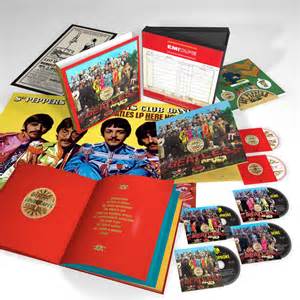 On May 26th, 2017, the newly mixed stereo version of the "Sgt. Pepper" LP came out which features a very vibrant "Lovely Rita" patterned, along with the rest of the album, after the original 1967 mono mix. As detailed above, "take nine" is presented in both the "2 CD Anniversary Edition" and the "Super Deluxe Edition" box set as an interesting bonus track. On May 26th, 2017, the newly mixed stereo version of the "Sgt. Pepper" LP came out which features a very vibrant "Lovely Rita" patterned, along with the rest of the album, after the original 1967 mono mix. As detailed above, "take nine" is presented in both the "2 CD Anniversary Edition" and the "Super Deluxe Edition" box set as an interesting bonus track.
Live Performances
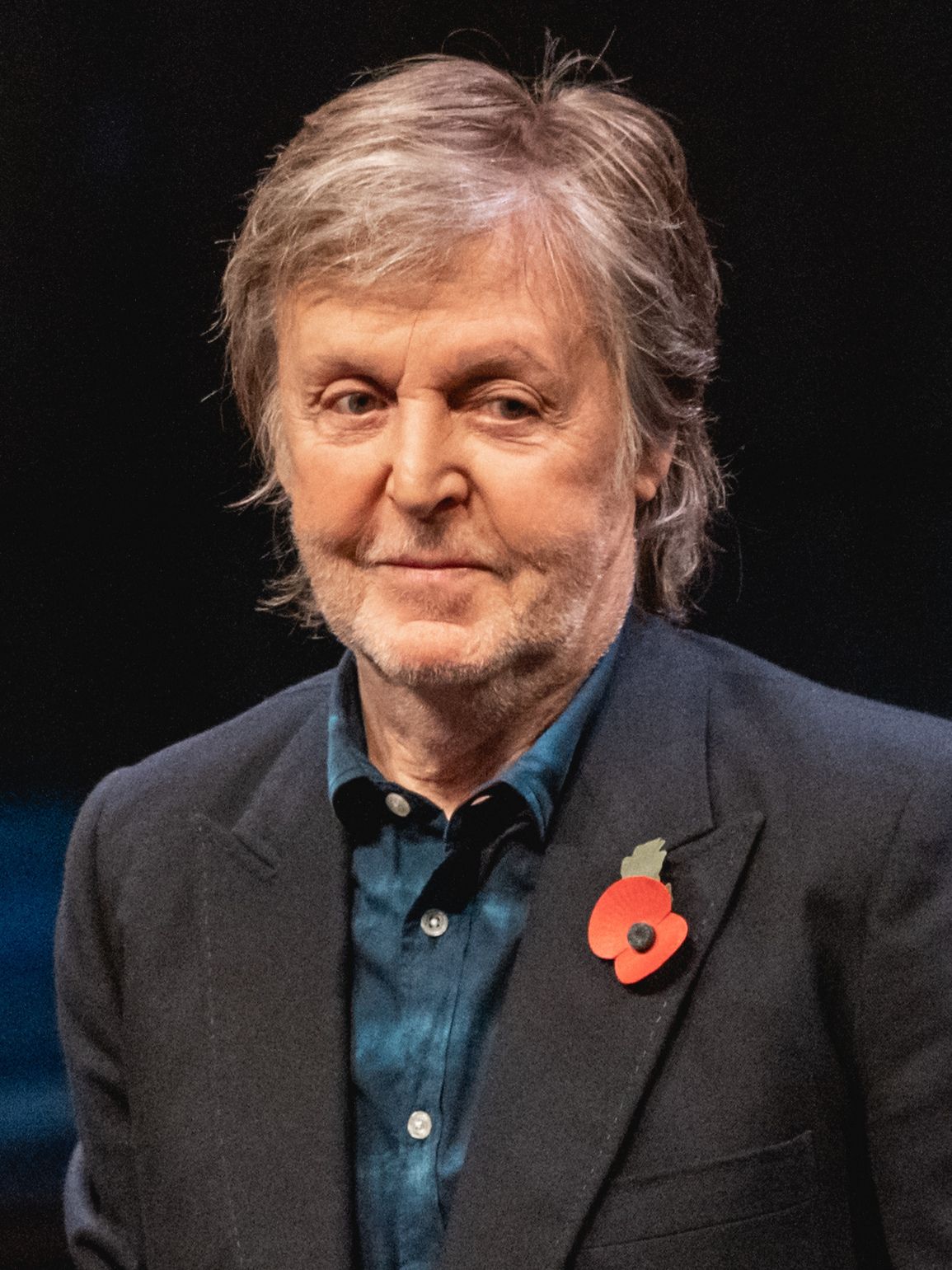 Being past the tour life of the band, The Beatles never performed “Lovely Rita” live. However, Paul finally brought the song to the concert stage during his "Out There!" tour, which began on May 4th, 2013 (Belo Horizonte, Brazil) and ended on October 22nd, 2015 (Buffalo, New York), foregoing his piano in exchange for an acoustic 12-string guitar. Being past the tour life of the band, The Beatles never performed “Lovely Rita” live. However, Paul finally brought the song to the concert stage during his "Out There!" tour, which began on May 4th, 2013 (Belo Horizonte, Brazil) and ended on October 22nd, 2015 (Buffalo, New York), foregoing his piano in exchange for an acoustic 12-string guitar.
Conclusion
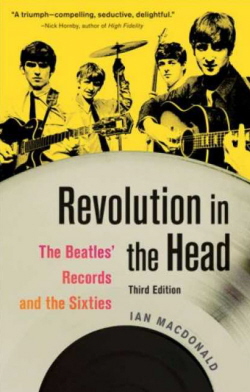 “The song is a cartoon, a rock-‘n’-roll ragtime with a tongue-in-cheek narrative that brings the cardboard sitcom to life.” So states Tim Riley’s 1988 book “Tell Me Why,” this being just one of the countless examples of critical praise given to the song. Even Ian MacDonald’s “Revolution In The Head,” who often gives his honest but shockingly negative appraisals of Beatles songs, proclaims "Lovely Rita" as “imbued with an exuberant interest in life that lifts the spirits.” “The song is a cartoon, a rock-‘n’-roll ragtime with a tongue-in-cheek narrative that brings the cardboard sitcom to life.” So states Tim Riley’s 1988 book “Tell Me Why,” this being just one of the countless examples of critical praise given to the song. Even Ian MacDonald’s “Revolution In The Head,” who often gives his honest but shockingly negative appraisals of Beatles songs, proclaims "Lovely Rita" as “imbued with an exuberant interest in life that lifts the spirits.”
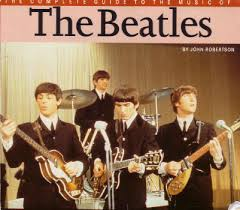 Paul obviously didn’t think of the song as a "masterpiece," but rather as a fun piece of literary fantasy. The creatively silly atmosphere evident in the recording studio that day exuded the fun they had and the effect the song should have on us: Simply stated - Don’t take it all that seriously – it’s just a touch of levity in an otherwise "heady" album. Perhaps it was best put by John Robertson in “The Complete Guide To The Music Of The Beatles”: “’Lovely Rita’ was a glorious throwaway.” Paul obviously didn’t think of the song as a "masterpiece," but rather as a fun piece of literary fantasy. The creatively silly atmosphere evident in the recording studio that day exuded the fun they had and the effect the song should have on us: Simply stated - Don’t take it all that seriously – it’s just a touch of levity in an otherwise "heady" album. Perhaps it was best put by John Robertson in “The Complete Guide To The Music Of The Beatles”: “’Lovely Rita’ was a glorious throwaway.”
Song Summary
“Lovely Rita”
Written by: John Lennon / Paul McCartney
-
Song Written: February, 1967
-
Song Recorded: February 23, 24, March 7, 21, 1967
-
First US Release Date: June 2, 1967
-
-
US Single Release: n/a
-
Highest Chart Position: n/a
-
-
Length: 2:43
-
Key: E major
-
Producer: George Martin
-
Engineers: Geoff Emerick, Richard Lush
Instrumentation (most likely):
-
Paul McCartney - Lead and Background Vocals, Piano (Hamburg Steinway Baby Grand), Bass Guitar (1964 Rickenbacker 4001 S), comb and toilet paper, tapping
-
John Lennon - Rhythm Guitar (1964 Gibson J-160E), Background Vocals, comb and toilet paper
-
George Harrison - Rhythm Guitar (1962 Gibson J-160E), Background Vocals, comb and toilet paper
-
Ringo Starr - Drums (1964 Ludwig Super Classic Black Oyster Pearl), comb and toilet paper
-
George Martin - Piano (Hamburg Steinway Baby Grand)
-
Shawn Phillips - Background Vocals
Written and compiled by Dave Rybaczewski
|
IF YOU WOULD LIKE TO MAKE A DONATION TO KEEP THIS WEBSITE UP AND RUNNING, PLEASE CLICK BELOW!
|